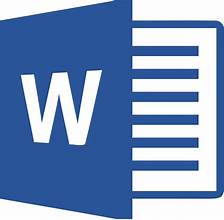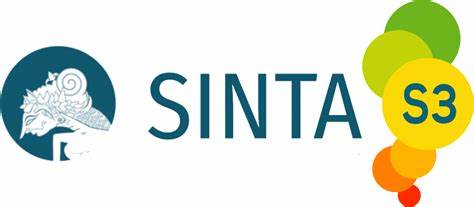SEMANTIC ANALYSIS OF FIGURATIVE LANGUAGE IN THE PERKS OF BEING WALLFLOWER MOVIE
Abstract
This study aims to identify the types of figurative language and determine the most dominant type used in The Perks of Being a Wallflower movie script. It employs a qualitative descriptive research design. The data were derived from the movie script, with a particular focus on the utterances of Charlie, the main character. To classify the figurative expressions, the researchers adopted Colston’s (2015) framework, which includes ten categories: metaphor, simile, verbal irony, oxymoron, hyperbole, contextual expression, understatement, idiom, indirect request, and repetition. The data were analyzed by identifying and categorizing occurrences of each figurative language type. The findings reveal that all ten categories were present in the script, though with varying frequencies. Indirect requests were the most frequently used (8 occurrences), followed by verbal irony and metaphor (7 each), repetition (6), hyperbole, contextual expression, and idiom (5 each), understatement (4), and both oxymoron and simile (3 each). The dominance of indirect requests reflects the characters’ subtle communication style and emotional depth, particularly that of Charlie. Overall, the study highlights the prevalence and diversity of figurative language in the movie, contributing to its expressive dialogue and emotional resonance.
References
Aljadaan, N. (2018). Understanding hyperbole. Arab World English Journal, 212, 1–31. https://doi.org/10.24093/awej/th.212
Apriliya, G. (2022, January 22). An analysis of figurative language in the dialogues Toba Dreams film by T. B. Silalahi [Undergraduate thesis, Universitas HKBP Nommensen]. Repository UHN.Colston, H. L. (2015). Using figurative language. Cambridge University Press.
Creswell, J. W. (2003). Research design: Qualitative, quantitavie and mixed methods approaches. Sage publications.
Culpeper, J., & Haugh, M. (2014). Pragmatics and the English language. Palgrave Macmillan.
Febriyanti, J. (2022). An analysis of figurative language in Aladdin movie (Doctoral dissertation, Universitas Bina Bangsa Getsempena).
Hameed, Y. (2017, October). The analysis of verbal irony. هرمس (Hermes), 6(4), 81–104. https://doi.org/10.21608/herms.2017.72486
Holmes, J., & Wilson, N. (2022). An introduction to sociolinguistics (5th ed.). Routledge.
Hutasoit, H. (2016). Figurative Language Found in Victor Hugo's Les Miserable Novel: A Semantics Approach. Jurnal Arbitrer, 3(1), 36-45.
Ikhsan, A. N. (2022). Linguistic study: Meaning field and semantic meaning components of President Joko Widodo’s speech text at the G20 Climate Change Summit COP26 Glasgow. In National Seminar of PBI (English Language Education) (pp. 189–196).
Khairunnisa, E. (2022). Figurative languages used in Robert Frost’s selected poems. ELITERATE: Journal of English Linguistics and Literature Studies, 2(3), 50–59.
Locher, M. A., & Watts, R. J. (2005). Politeness theory and relational work. Journal of Politeness Research, 1(1), 9–33. https://doi.org/10.1515/jplr.2005.1.1.9
Mawarti, M., & Laili, E. N. (2023). Figurative language semantic analysis in Adhitia Sofyan’s album Forget Your Plan. Teaching English as Foreign Language, Literature and Linguistics, 3(1), 106–117.
Mentari, L. R. (2023). An analysis of figurative language in short story The Happy Prince by Oscar Wilde. Journal of English for Specific Purposes in Indonesia, 2(1), 33–40.
Merlin, P., & Ardiantari, I. A. P. G. (2024). Figurative language found in Wolf Town movie. ELYSIAN Journal: English Literature, Linguistics and Translation Studies, 4(2), 104–113.
Monasterio, D. (2023). Zoltan Kövecses: Metaphor: A practical introduction. Onomazein(61), 243–248. https://doi.org/10.7764/onomazein.61.12
Monny, M. O. E. (2023). Figurative language and its meaning found in the novel It Starts with Us. Journal on Education, 6(1), 609–619.
Mukti, B. R., & Nugraha, D. N. S. (2022). Figurative language analysis in Sing 2 movie by Garth Jennings: A semantics study. Ethical Lingua: Journal of Language Teaching and Literature, 9(2), 699–706.
Nurhayati, S. (2024). Figurative languages in The Shape of Water movie. Pujangga: Jurnal Bahasa dan Sastra, 10(1), 56–76.
Pierini, P. (2007). Simile in English: From description to translation. CÍRCULO de Lingüística Aplicada a la Comunicación, (29), 2.
Purnama, R., Muthalib, K. A., & Burhansyah, B. (2024). Analyzing figurative language in adventure-comedy animated movies. Research in English and Education Journal, 9(1), 18–23.
Qassim, S. A., & Khudhair, B. F. (2022). Towards an analytical study of oxymoron. In A proceeding of the international conference on new advances in humanities postpandemic, 11th July.
Telaumbanua, T. (2022). Meaning of idiomatic. Research on English Language Education, 4(2), 7-12.
Wardani, W. A. (2022). Figurative Language Used in The Split Movie. Language Horizon: Journal of Language Studies, 10(3), 1-8.
Downloads
Published
Issue
Section
License

This work is licensed under a Creative Commons Attribution-ShareAlike 4.0 International License.
The author is responsible for acquiring the permission(s) to reproduce any copyrighted figures, tables, data, or text that are being used in the submitted paper. Authors should note that text quotations of more than 250 words from a published or copyrighted work will require grant of permission from the original publisher to reprint. The written permission letter(s) must be submitted together with the manuscript.




